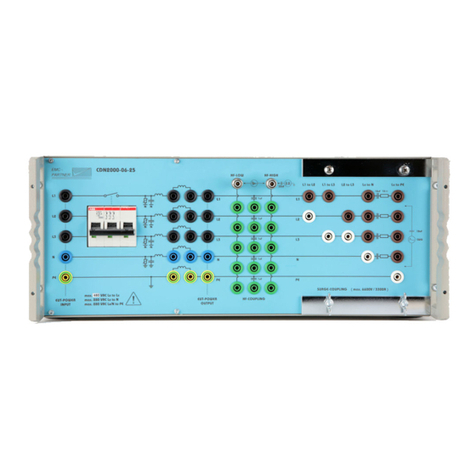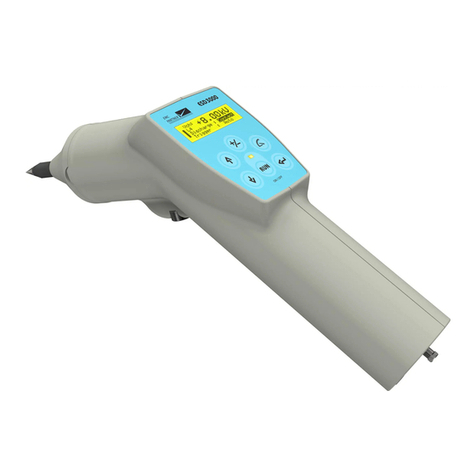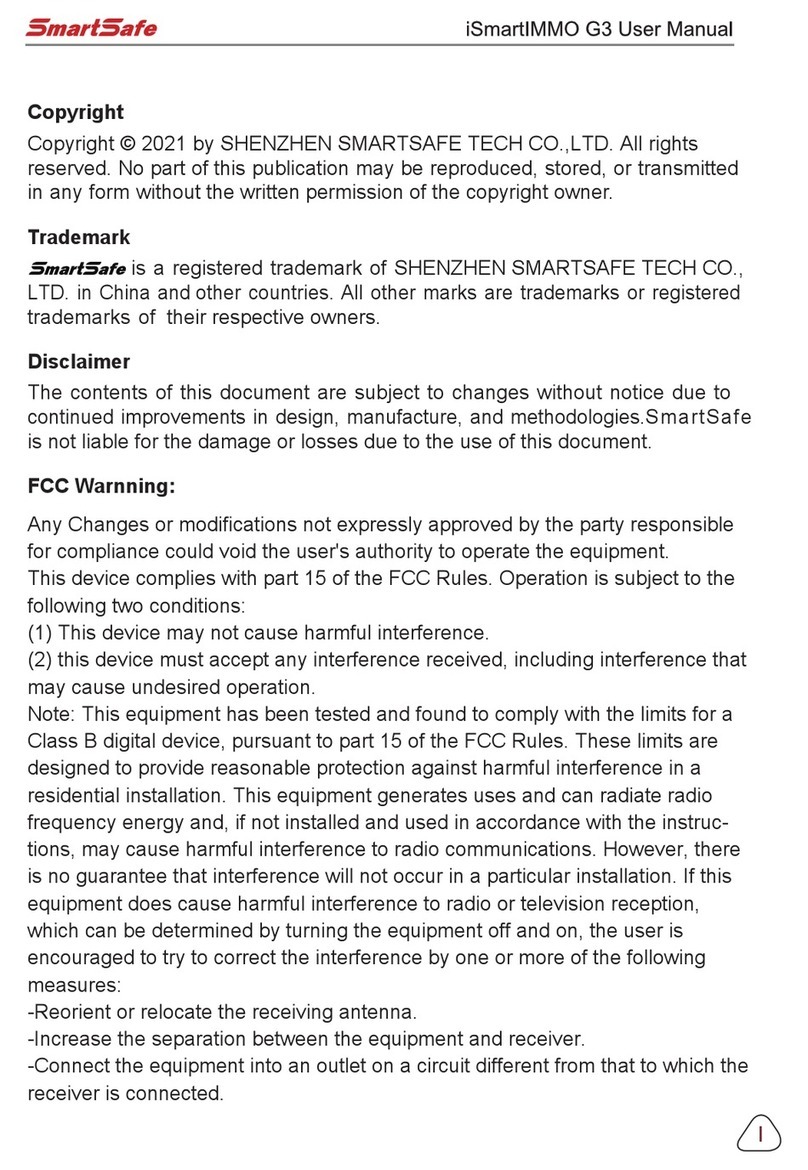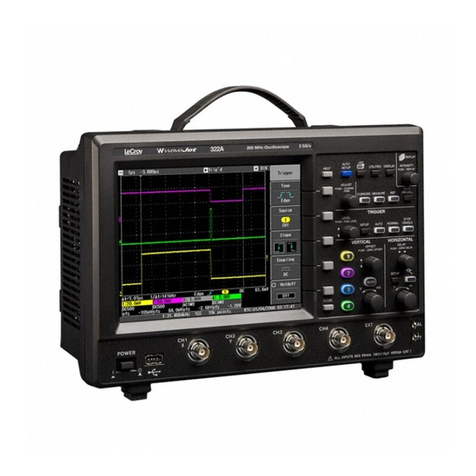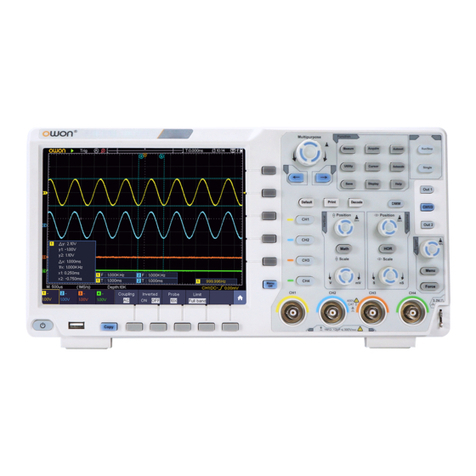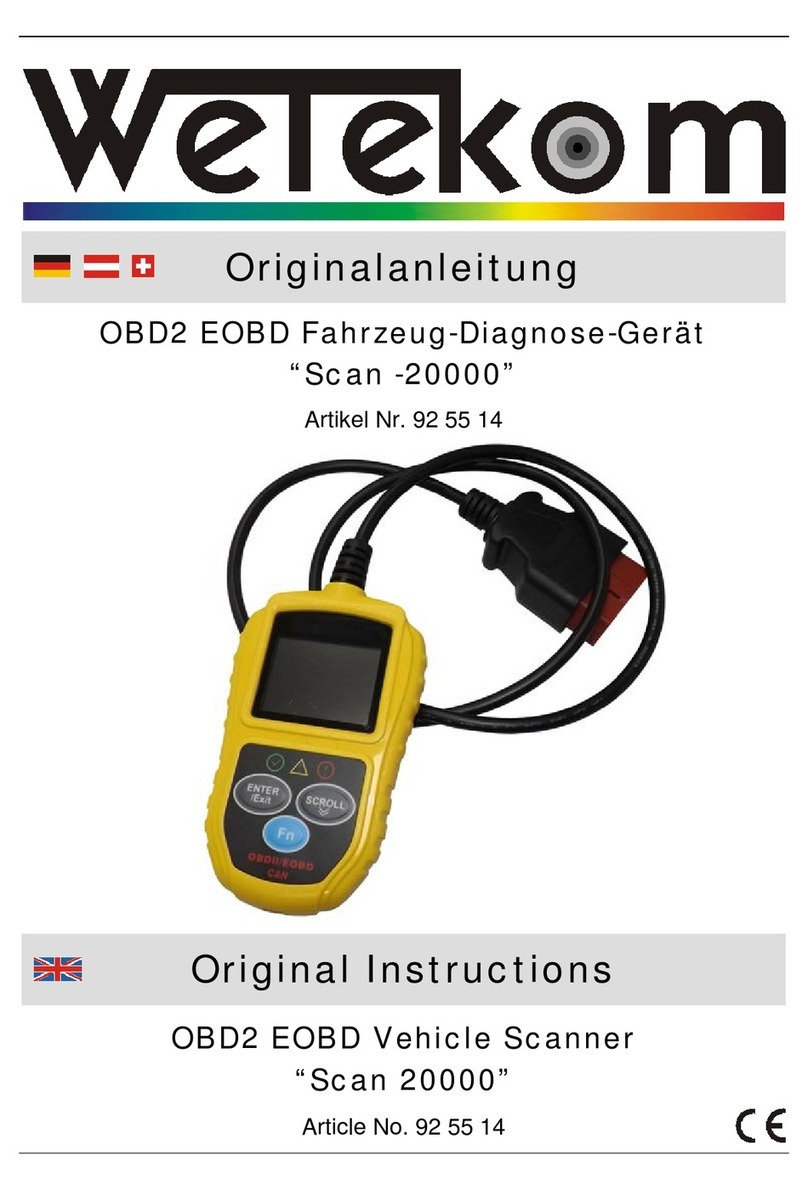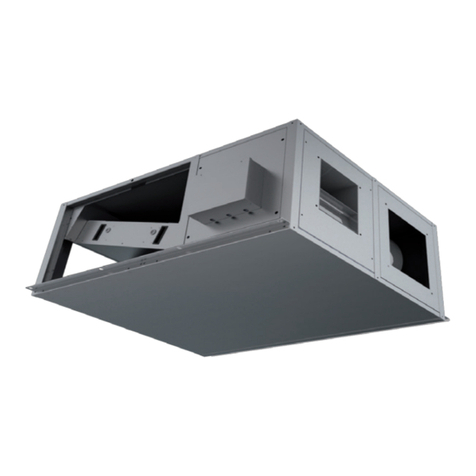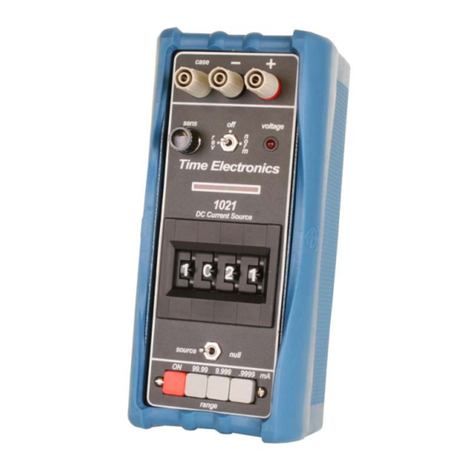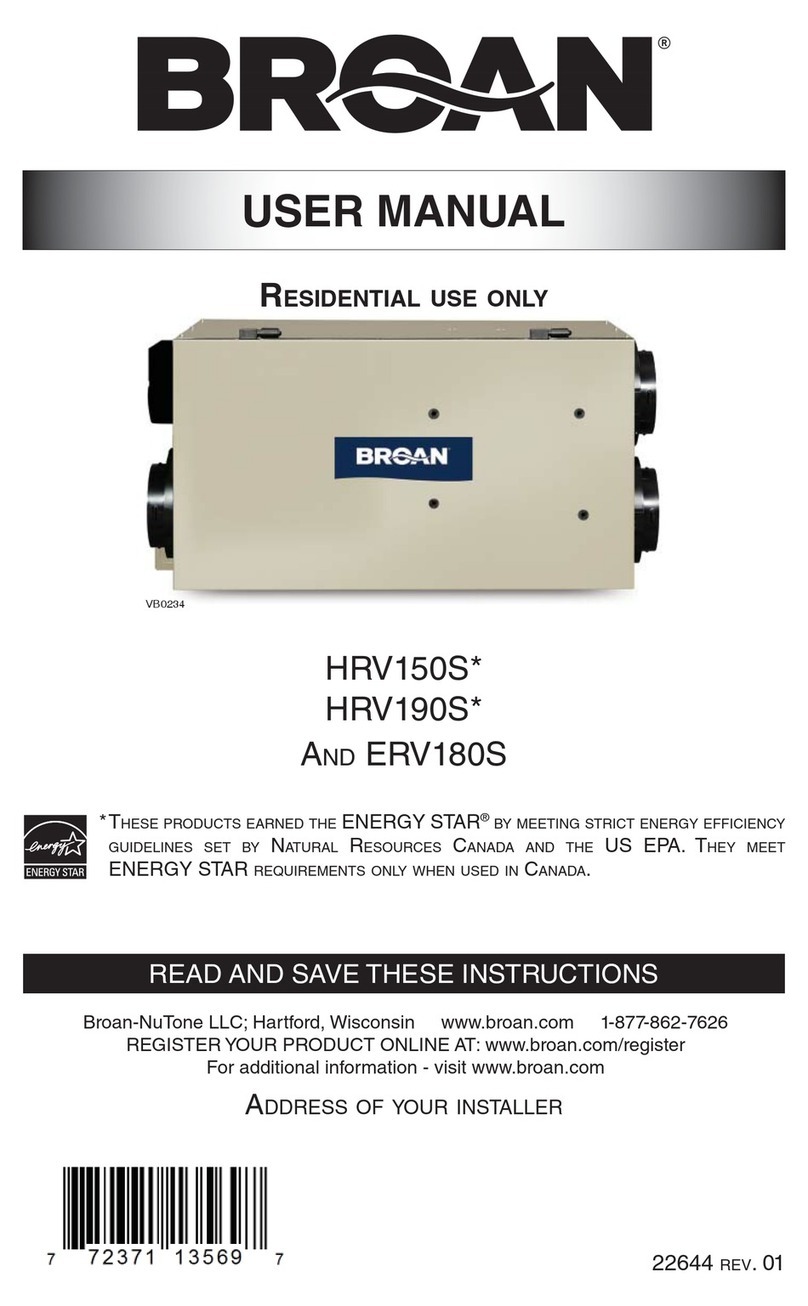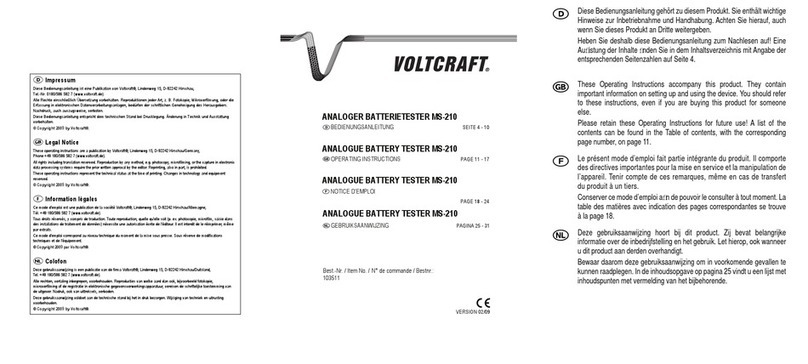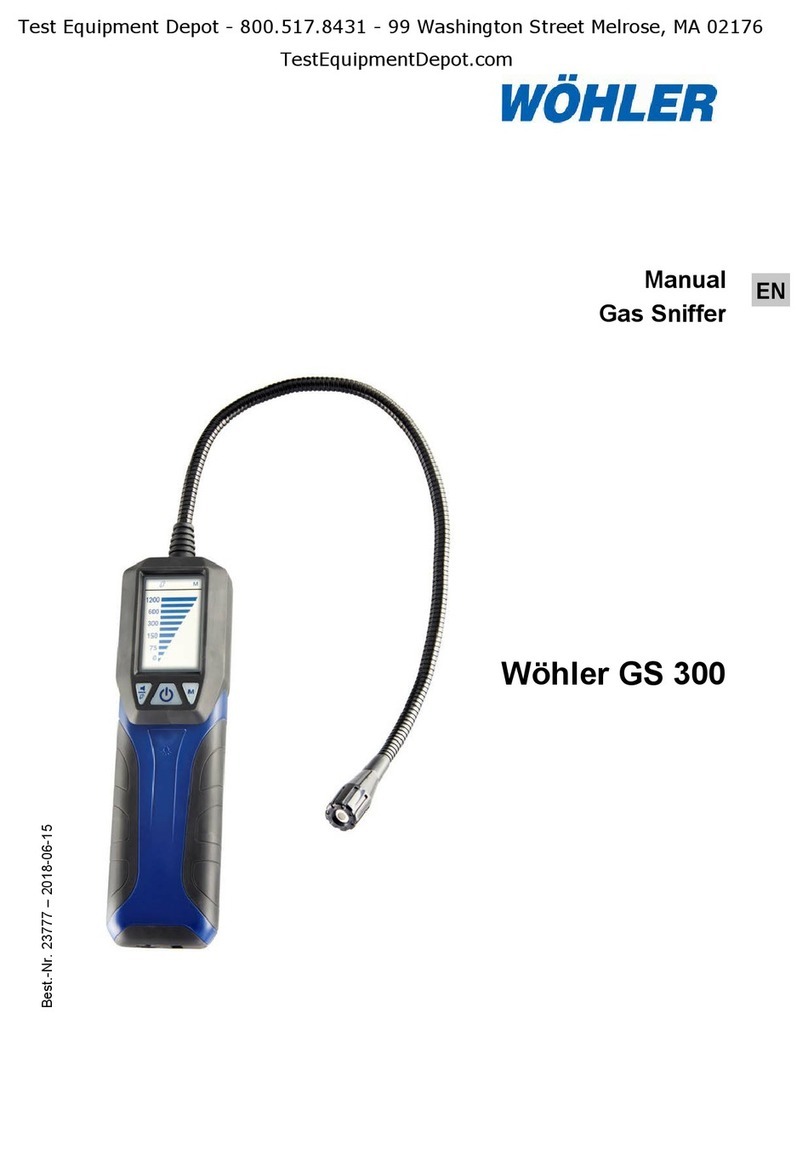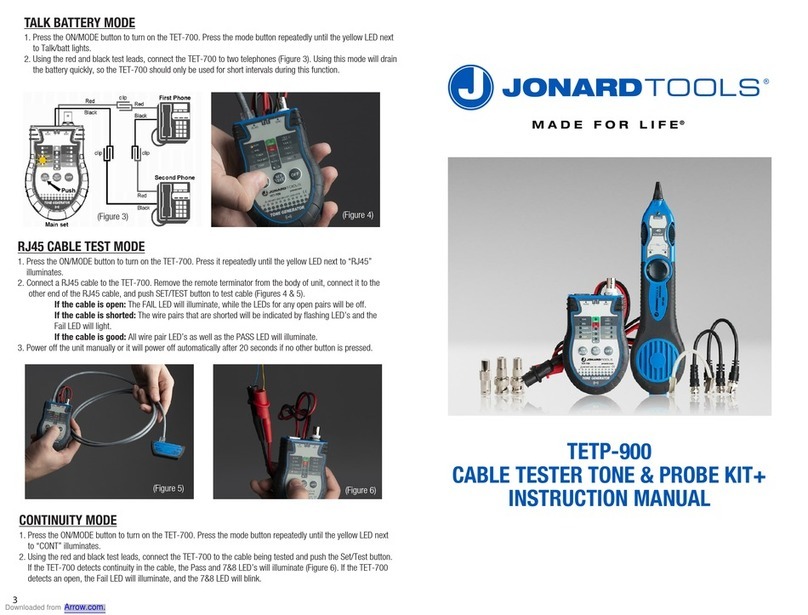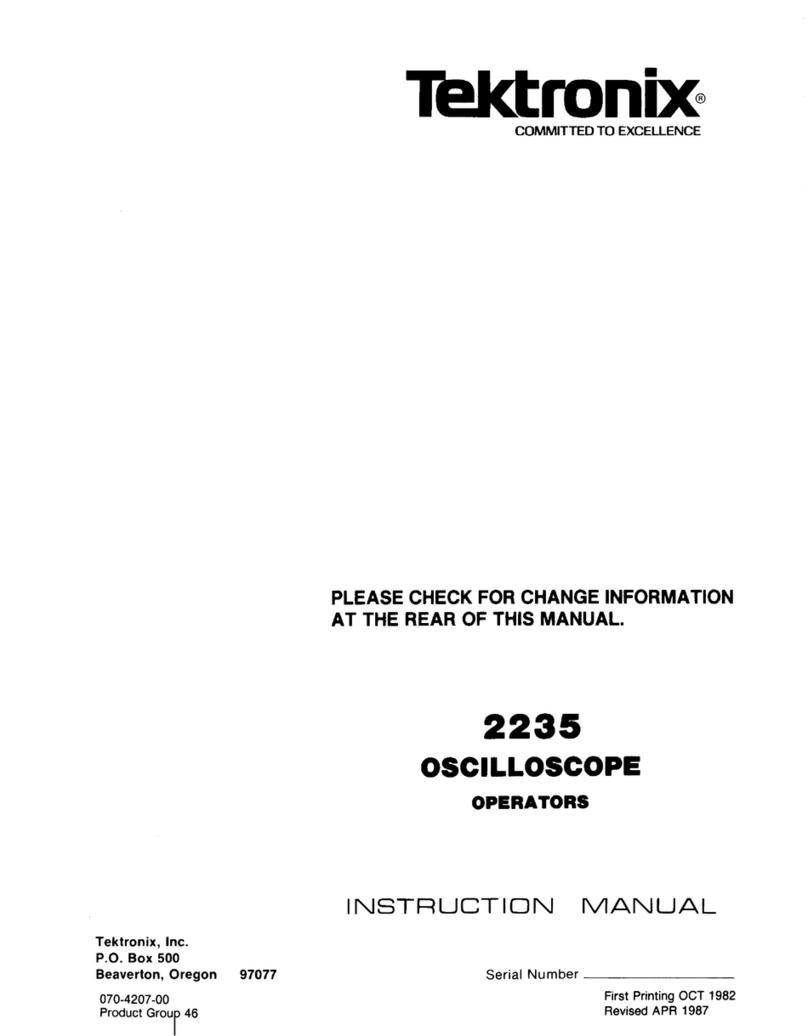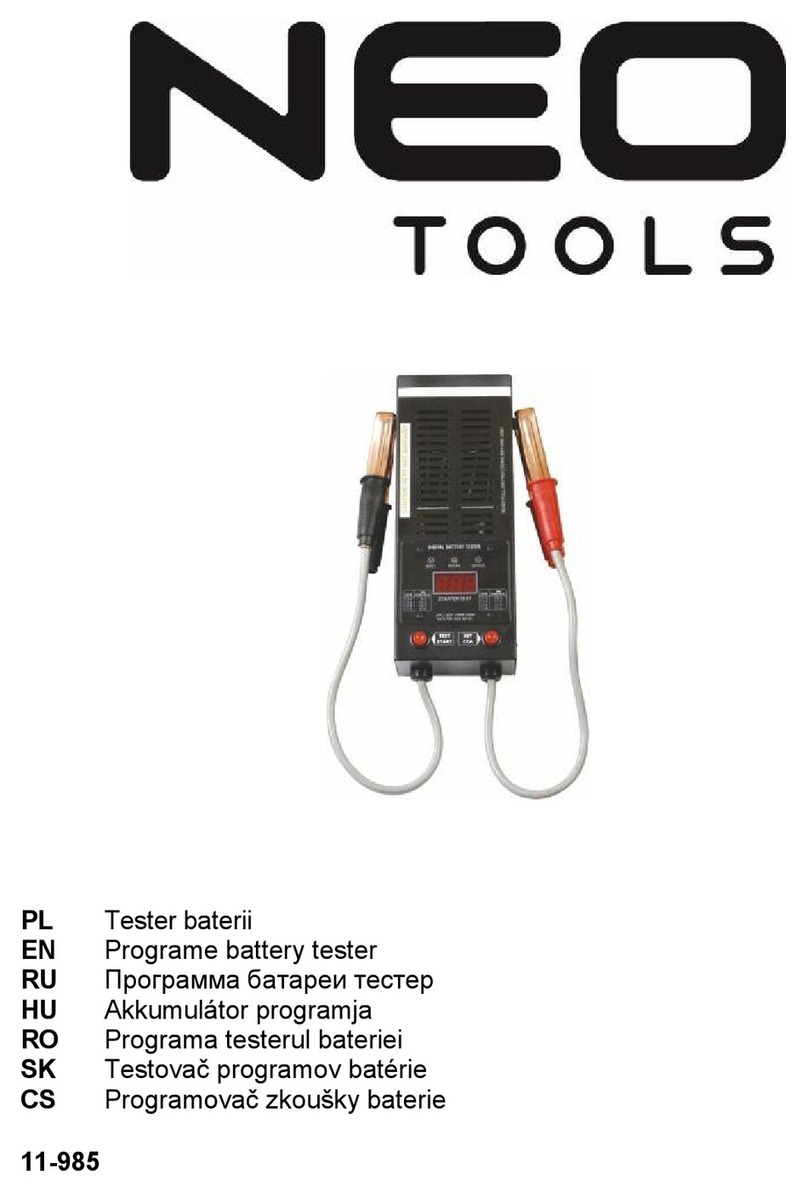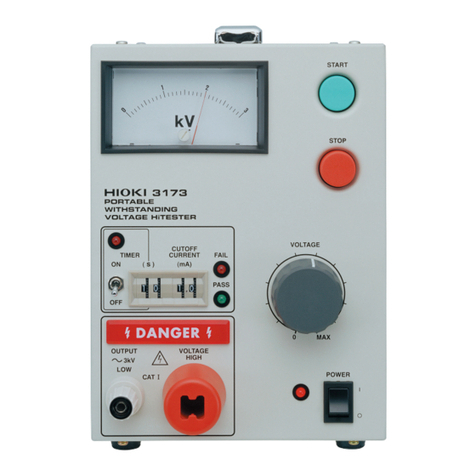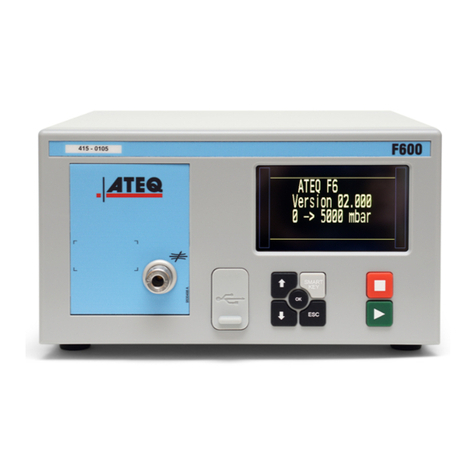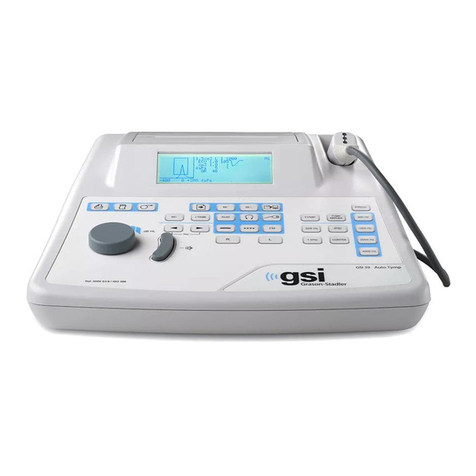EMC-PARTNER IMU4000 User manual

E-IMU4000-E-Manual 1/104
User Manual IMU4000
This User Manual is valid for all versions of IMU4000
Title: EMC Test System IMU4000
Date: 10.07.2012
Product Manager: M. Sacchi
Calibration Manager: R. Henz
Technical Manager: M. Lutz
Revised: 20.06.2014
EMC TESTER
IMU4000 and Versions

IMU4000
2/104
Attention Standard References and User Manual
This user manual provides information necessary for operation of the test
equipment.
Throughout the users manual, standard references are used as an aid to
understanding only.
The relevant standard(s) must be obtained and used in conjunction with
this users manual
Attention contact EMC PARTNER!
Before starting any test, where specifications or limits for a particular
application are not included or could not be found in the EMC PARTNER
documentation (User Manual, Instruction Sheet), users must contact
EMC PARTNER for clarification.
Repair costs arising from incorrect use or failure to clarify an application
with EMC PARTNER remain the responsibility of the user.
Achtung EMC PARTNER kontaktieren!
Wenn für eine Anwendung die notwendigen Informationen: Parameter
oder Limiten nicht aufgeführt sind in der Bedienungsanleitung UM oder in
der Instruktionsanweisung IS, ist der Anwender verpflichtet EMC
PARTNER zu kontaktieren bevor die Prüfung gestartet wird. Anfallende
Reparatur- und Kalibrationskosten bei nicht Beachtung der Limiten in
Bedienungsanleitung / Instruktionsanweisung oder unterlassen der
Rückfrage werden den Kunde belastet.
ATTENTION, veuillez contacter EMC PARTNER!
Lorsque, pour une application, des limites ou des informations
nécessaires ne sont pas mentionnées dans la documentation, l’utilisateur
est tenu de prendre contact avec EMC PARTNER afin de recevoir les
informations supplémentaires avant de commencer les tests.
Les coûts de réparation dus au non respect des limites figurant dans le
mode d’emploi ou dans la notice d’utilisation ainsi que l’omission d’une
demande de précision seront à la charge du client.
Declaration of Conformity
See sheets attached at the end of this user manual:
Declaration of conformity to product standards
Declaration of conformity to low voltage directive
Declaration of conformity to EMC directive

IMU4000
3/104
Contents:
1DESCRIPTION 9
1.1 The interference sources of the transients 9
1.1.1 Electrostatic discharge ESD 9
1.1.2 Switched inductance EFT (Burst) 9
1.1.3 Indirect lightning SURGE 10
1.1.4 Voltage interruptions, Dips 11
1.1.5 How ESD, EFT, SURGE DIPS differ 11
1.1.6 Common mode disturbances in the frequency range 0 Hz to 150 kHz 12
1.2 Overview of the IMU4000 test system 12
1.2.1 IMU4000 12
1.2.2 ESD - IMU4000 System overview 14
1.2.3 EFT - IMU4000 System overview 14
1.2.4 SURGE - IMU4000 System overview 15
1.2.5 DIPS and Interruption –IMU4000 System overview 15
1.2.6 Magnetic fields - IMU4000 System overview IEC 61000-4-8 Ed.2 16
1.2.7 Magnetic fields - IMU4000 System overview IEC 61000-4-9 Ed.1 16
1.3 Technical data of the IMU4000 17
1.3.1 Electrostatic discharges ESD only valid with EXT-TRA3000 E 17
1.3.2 Electric Fast Transient EFT EXT-IMU4000 F5 18
1.3.3 Coupling / De-coupling Network EFT 18
1.3.4 Lightning and switching actions SURGE (IEC 61000-4-5 Ed.3) 20
1.3.5 Coupling / De-coupling Network „CDN-SURGE“ 20
1.3.6 Power voltage limits on direct output used together with external SURGE CDN 21
1.3.7 Voltage interruption and Variation with internal Variac EXT-TRA3000 D-V 21
1.3.8 Interruption and Voltage Variation IEC 61000-4-11 Ed.2 with external Variac 22
1.3.9 DIPS circuit in accordance with IEC 61000-4-29 for d.c. power ports. 22
1.3.10 Synchronisation of IMU4000 to mains frequencies 23
1.3.11 Measuring circuit, measuring outputs 23
1.3.12 Trigger Output Levels 24
1.3.13 Control 24
1.4 Mechanical dimensions 25
1.5 Power Consumption 25
1.6 Included articles, dimensions 25
1.7 Standard accessories 26
2SAFETY 27
2.1 Safety standard 27
2.2 Climatic Conditions 27
2.3 Precautionary measure during use 28
2.4 Electromagnetic Compatibility 28

IMU4000
4/104
2.5 The manual is an integral part of the equipment. Refer to the manual. 28
2.6 Sécurité 29
2.6.1 Normes de sécurité 29
2.6.2 Conditions climatiques 29
2.6.3 Mesures de précaution lors de l'utilisation 30
2.6.4 Compatibilité électromagnétique 30
2.6.5 Le manuel fait partie intégrante de l'équipement. 30
2.7 Sicherheit 31
2.7.1 Sicherheit Standard 31
2.7.2 Klimatische Bedingungen 31
2.7.3 Vorsichtsmassnahmen während dem Betrieb 32
2.7.4 Elektromagnetische Verträglichkeit 32
2.7.5 Dieses Manual ist Bestandteil von IMU4000 und dessen Testumgebung. 32
3MECHANICAL STRUCTURE 33
3.1 General 33
3.2 Impulse-forming Networks 34
3.3 Measuring Circuit 35
3.4 Coupling / De-coupling Network CDN 35
3.5 EUT power supply at DIPS 35
4CONTROL PANEL 37
4.1 Front panel of the IMU4000 37
4.1.1 Control part 37
4.1.2 Operation panel 39
4.2 Rear Panel of the IMU4000 41
5PREPARATION FOR OPERATION 45
5.1 Attention, Refer to Manual 45
5.2 Operators and Service Personnel 45
5.3Checks before operation 45
5.3.1 Optical verification of the IMU4000 Generators 45
5.3.2 Power source check 45
5.3.3 Connecting the IMU4000 Generator to the power line 45
5.3.4 EUT Power, Power source for the EUT 45
5.3.5 EUT Power with voltages different from the public power line (Variac) 47
5.4 EUT Power, supply of the EUT with dc 48
5.4.1 SURGE superimposing on dc 49
5.5 Hints for the test set up according to IEC standards 50

IMU4000
5/104
5.5.1 Test set up EFT 50
5.5.2 ESD test set up 51
5.5.3 Test set up SURGE 52
5.5.4 Test set-up for table top equipment 54
5.6 Practical testing sequence 55
6TESTING WITH THE IMU4000 57
6.1 Operation of the tester via touch screen monitor 57
6.1.1 General information about the touch screen monitor 57
6.1.2 Selecting the parameter –Example CWG 57
6.2 The general menu 61
6.2.1 General menu “Setups” 61
6.2.2 General menu “Setup Linker” 61
6.2.3 General menu “Protocols” 61
6.2.4 General menu “Settings” 62
6.2.5 General menu “System” 63
6.2.6 General menu “Power” 63
6.2.7 EUT - Power and EUT - Control 63
6.2.8 General menu “Update” 64
6.3 EMC test operation „RUN Mode“ 64
6.3.1 Example CWG operation 65
6.3.2 Web Server 65
7MAINTENANCE AND SERVICING 67
7.1 Maintenance 67
7.2 Cleaning front and rearplate 67
7.3 Verification versus Calibration 67
7.3.1 Verification Example IEC 61000-4-4 Ed.2 67
7.3.2 Calibration Example IEC 61000-4-4 Ed.2 67
7.4 Verification of the IMU4000 by the user 67
7.4.1 EFT 67
7.4.2 ESD 68
7.4.3 SURGE 68
7.4.4 Interruption 68
7.4.5 Variation 68
7.5 Calibration of the IMU4000 by EMC PARTNER AG 69
7.6 Service of SPD Surge Protective device 69
8WHAT MUST BE DONE FOLLOWING FAILED OPERATION 71
8.1 Service; Repairs 71
8.1.1 Service Flowchart of IMU4000 System: 72
8.1.2 Data Transfer via UBS Stick 72

IMU4000
6/104
8.2 Spare parts list 72
8.3 Check before you contact the service of EMCP 73
8.3.1 Fuses 73
8.4 Service department of EMC PARTNER AG 73
9PACKAGING AND TRANSPORT 75
9.1 Packaging 75
9.2 Transport 75
10 RECYCLING / DISPOSAL 77
10.1 RoHS directive 2002/95/EG 77
10.2 WEEE directive 2002/96/EG 77
10.3 Information for dismantling 77
10.4 Parts which can be recycled 77
10.5 Parts which cannot be recycled 77
11 ACCESSORIES 79
11.1 TRA accessories to IMU4000 Versions 79
11.2 Use of TRANSIENT accessories 81
12 REMOTE PORTS 83
12.1 General 83
12.1.1 Ethernet port setting on IMU4000 83
12.1.2 IP address setting on PC 83
12.1.3 Using Web Browser 84
12.2 Software "TEMA3000" for IMU4000 84
12.2.1 TEMA3000 Basic 84
13 APPENDIX AND CORRECTIONS 87
13.1 Appendix 87
13.1.1 Definition of the EFT Waveform 87
13.1.2 Definition of the ESD Waveform 88
13.1.3 Definition of the SURGE Waveform 89
13.1.4 DIPS Specification 90
13.1.5 VARIATION Specification IEC 61000-4-11 Ed.1 91
13.1.6 VARIATION Specification IEC 61000-4-11 Ed.2 92
13.2 Correction 93

IMU4000
7/104
13.2.1 Declaration of conformity to the EMC directive 2004/108/EC 93
13.2.2 Declaration of conformity to the LV directive 2006/95/EC 93
13.2.3 Declaration of conformity to the Basic Standards 93
14 GLOSSARY 95
15 INDEX 97

IMU4000
8/104

E-IMU4000-E-Manual 9/104
1 Description
1.1 The interference sources of the transients
1.1.1 Electrostatic discharge ESD
Electro Static Discharge IEC 61000-4-2 Ed2
What causes electrostatic discharges?
A person becomes electrostatically charged by walking over an insulating floor surface. The capacity of the
body can be charged to several kilovolts (1000 V). This capacity is discharged when contact is made with an
electronic unit or system. The discharge is visible as a spark in many cases and can be felt by person
concerned, who gets a „shock“. The discharges are harmless to humans, but not to sensitive, modern
electronic equipment. The resulting current causes interference in the units or can make entire systems
„crash“.
For over 25 years it has been known to the electrical industry that electrostatic discharges as encountered
every day can have a disastrous effect on electronic equipment.
The cost of damage caused by ESD is difficult to assess, but amounts to billions of dollars worldwide.
The areas most affected are:
manufacturing of integrated circuits (chips).
the chemical industry, e.g. by explosion, fires caused by the sparks from electrostatic discharges.
malfunctioning of process control with the secondary damage costs.
1.1.2 Switched inductance EFT (Burst)
Electric Fast Transient or Burst. IEC 61000-4-4 Ed.3
Industrial measurement and control equipment practically always operates in conjunction with conventional
control units (relays, contactors). Fluorescent lamp ballast units, insufficiently suppressed coffee grinders,
vacuum cleaners, drilling machines, hair dryers, universal motors, etc. can be found everywhere in the
power supply system. All these, primarily inductive loads, produce interference when switched on and off. A
wide range of switching transients, also called bursts, are produced with the following waveform.

IMU4000
10/104
Figure: 1.0.1.2
The parameters which define the
burst are:
-Rise time of the spike Ts in ns
-Repetition frequency f4 in the range of kHz up to MHz
-Energy, some mJ
-Voltage amplitude UBmax. up to some kV
-Duration of a burst several milliseconds
The different EFT sources generate different burst waveforms. A typical burst waveform is shown in the
figure above.
The impedance of the EFT source is generally high, therefore the capacitance of connected cables
influences the rise time.
1.1.3 Indirect lightning SURGE
SURGE are transients with a high energy, relatively low frequency content up to some
kV.
IEC 61000-4-5 Ed.3
Lightning is a daily event and occurs about 8 million times in approximately 44,000 storm centres throughout
the world. That is in the order of 100 discharges per second. Measuring and recording equipment in aircraft
registers one lightning strike for every 1,000 flying hours.
Product assembly and finishing in many industries depends on modern electronics. The most frequent
cause of damage is overvoltage, caused either by switching action in the equipment itself or by atmospheric
discharges such as lightning. In order that the overvoltages do not destroy the electronic equipment,
protection elements and circuits are placed at the inputs and outputs of electronic equipment.
Consumer electronic devices, such as antenna ports on television sets, telephones, faxes, can also be
influenced by atmospheric discharges. The disturbances are mostly tolerable because of their relatively low
occurrence. To protect such equipment from damage protection elements and circuits are installed. Tests
must be carried out to determine whether these protective circuits are really effective.
Besides lightning, switching action can also generate high energy impulses.

IMU4000
11/104
1.1.4 Voltage interruptions, Dips
DIPS means a sudden reduction of the voltage at a point in the electrical system,
followed by voltage recovery after a short period of time from a few cycles to a few
seconds.
IEC 61000-4-11 Ed.2
Voltage failures occur following switching operations, short-circuits, fuses blowing and when running up
heavy loads. These are man-made faults, produced unintentionally, and include operation of domestic
appliances, electronically controlled machine tools, switching operations in the public lighting system,
economy lamps, etc.
The quality of the electrical power supply is increasingly becoming a central topic of discussion. Interference
sources in the mains, caused by electronic power control using non-linear components such as thyristors
are increasing. These devices are used in domestic appliances, such as hotplates, heating units, washing
machines, television sets, economy lamps, PCs and industrial systems with speed-controlled drives.
Simultaneously an increase in electronic systems sensitive to interference is apparent in all sectors of the
electrical power system.
In order to achieve electromagnetic compatibility, both the interaction of the electrical equipment connected
to the supply and its noise immunity must be determined.
1.1.5 How ESD, EFT, SURGE DIPS differ
Characteristics
Static discharges
Switched
inductance
Lightning.
switching actions
Mains
Interruptions
Phenomenon
"ESD"
"EFT Burst"
"Surge"
"DIPS"
Voltage U
up to 15 kV
up to 4 kV
up to 4 kV
supply source
voltage
Energy at maximum
voltage
approx. 10 mJ
300 mJ
300 J
-
Repetition rate
Single event
Multiple event 5 kHz
Maximum 6
Impulse / minutes
supply source
frequency
Application to the
different ports
Touchable metallic
part ( enclosure
ports)
AC/DC ports, Signal
and data lines
AC/DC ports, Signal
and data lines
AC/DC ports
upper limit
frequency
approx.. 1 GHz
approx. 200 MHz
approx. 350 kHz
approx. 100 kHz
impulse waveform
IEC 61000-4-2 Ed.2
IEC 61000-4-4 Ed.2
IEC 61000-4-5 Ed.2
IEC 61000-4-11 Ed.2
The overview of „How ESD,EFT, SURGE,DIPS differ“ shows that all four test have to be carried out
because the frequency content and energy of the four transient tests are different.

IMU4000
12/104
1.1.6 Common mode disturbances in the frequency range 0 Hz to 150 kHz
IEC 61000-4-16 Ed.1 Amd.2
The conducted, common mode disturbances at mains frequency and its harmonics may be generated by
faults on the mains power distribution system and leakage currents flowing into the earth system. The d.c.
power supply network used in industrial, electrical plants and telecommunication centres may also generate
d.c. common mode disturbances, particularly when either the positive or negative terminal is connected to
earth.
Electrified railways will also generate disturbances at their frequency of operation (typically 162/3 Hz).
The induced disturbances are described in detail in IEC 61000-2-3 and IEC 61000-2-5. The different types
of disturbances may be present simultaneously but at different levels.
Furthermore, if the power system develops a fault, the disturbance levels may be up to 10 times the
reference levels given for normal operating conditions, however the fault condition disturbances are typically
present for short durations only (up to about 1 s).
The disturbances at mains frequency and harmonics may affect signal ports of equipment where insufficient
common mode rejection is available. Disturbances up to 1-2 kHz are mainly due to the harmonics of the
power mains.
At higher frequencies the disturbances are mostly related to power electronic equipment, which may
produce switching currents involving the ground system, giving rise to conducted, common mode
disturbances.
1.2 Overview of the IMU4000 test system
1.2.1 IMU4000
The tester IMU4000 simulates transients of different interference sources. Such as: indirect lightning in
electronic systems, human body electrostatic discharges, switched inductance (Burst), power supply
interruptions and variations and common mode disturbance.
The test system IMU4000 with accessories fulfils all requirements of the IEC basic standards 61000-4-2
Ed.2 (ESD); 61000-4-4 Ed.3 (EFT); 61000-4-5 Ed.3 (SURGE); impulse; 61000-4-11 Ed.2 (Interruption and
Variations), and with accessories 61000-4-8 Ed.2 (Magnetic field 50/60Hz) and 61000-4-9 Ed.1 (Magnetic
field SURGE), 61000-4-29 Ed.1 dips and interruption on d.c. and IEC 61000-4-34, DIPS and Interruption
>16A per phase.
If not all transient test are needed, the IMU4000 tester is also available in various versions, with the
possibility to upgrade the tester later to a full IMU4000 test system.

IMU4000
13/104
1.2.1.1 The following IMU4000 version are available:
Prduct Nr. Type
106753 IMU4000 F
106756 IMU4000 S
106757 IMU4000 D
106758 IMU4000 C
106759 IMU4000 F-S
106760 IMU4000 D-V
106761 IMU4000 F-V
106762 IMU4000 S-V
106763 IMU4000 F-D-V
106764 IMU4000 S-D-V
106765 IMU4000 D-V-C
106766 IMU4000 F-S-C
106767 IMU4000 F-S-D-V
106768 IMU4000 S-D-V-C
106769 IMU4000 F-S-D-V-C
106770 IMU4000 F-C
106771 IMU4000 F-S-D
106772 IMU4000 S-C
106774 IMU4000 D-C
106775 IMU4000 V
106776 IMU4000 F-S-D-C
106777 IMU4000 F5
106778 IMU4000 F5-S
106779 IMU4000 F5-S-D-V
106780 IMU4000 F5-V
106781 IMU4000 F5-C
106782 IMU4000 F5-S-D
106783 IMU4000 F5-D-V
106784 IMU4000 F5-S-C
106785 IMU4000 F5-S-D-C
106786 IMU4000 F5-S-D-V-C
106896 EXT-IMU4000 F
106897 EXT-IMU4000 S
106898 EXT-IMU4000 F5

IMU4000
14/104
1.2.2 ESD - IMU4000 System overview
EUT
Calibration Devices (ESD-Target2, ESD VERI-V)
TEMA3000
Vertical Coupling
Plate
ESD-VCP50
IMU4000
EXT-TRA3000-E
150pF / 330 ohm
1.2.3 EFT - IMU4000 System overview
EUT
Data Lines
CN-EFT1000
Single Phase
AC / DC Power
Direct
TEMA3000
Calibration Devices (VERI50-EFT, VERI1K-EFT, Adapter EFT-CDN)
CDN2000A-06-32
CDN2000A-06-63
CDN-A-3P100-480 F
CDN-A-3P100-690 F
Three Phase
EUT Power
Differential Output
Adpater CN-BALUN
PS3 IMU4000
EXT-IMU4000-F/F5

IMU4000
15/104
1.2.4 SURGE - IMU4000 System overview
EUT
Un-balanced
Lines
CDN-KIT1000
Single Phase
AC / DC Power
Direct
TEMA3000
Balanced
Telecom Lines
CDN-UTP8 ED3
CDN2000A-06-32
CDN2000A-06-63
CDN-A-3P100-480 F-S
CDN-A-3P100-690 F-S
Three Phase
EUT Power
Railway Application
Option
NW-TRA-RAIL
Direct Injection
Probe
CN2000TT
Coupling
Decoupling Modules
DN & CN2000-22-5
IMU4000
PS3
EXT-IMU4000 S
1.2.5 DIPS and Interruption –IMU4000 System overview
EUT
Single Phase
AC Power
Direct
TEMA3000
Three Phase
Interrupt AC / DC
Power
PFS32 / PFS63 /
PFS75
Three Phase
EUT Power
Calibration Device (VERI-DIPS)
IMU4000
EXT-TRA
3000-D
Three Phase
DIPS AC Power
SRC32 / SRC63 /
SRC75
VAR-EXT1000
or PS3
EXT-TRA
3000-V

IMU4000
16/104
1.2.6 Magnetic fields - IMU4000 System overview IEC 61000-4-8 Ed.2
EUT
TEMA3000
IMU4000
EXT-TRA
3000-D
VAR-EXT1000
EXT-TRA
3000-V
PS3
MF1000-1 MF1000-2 MF1000-3
16.7Hz
1.2.7 Magnetic fields - IMU4000 System overview IEC 61000-4-9 Ed.1

IMU4000
17/104
1.3 Technical data of the IMU4000
1.3.1 Electrostatic discharges ESD only valid with EXT-TRA3000 E
Energy storage capacitance
150 pF
Discharge resistance
330
Charging resistance
54 M
Holding time (drop to 95%)
better than 5 s
Current rise time, 2 load
0.8 ns
± 25%
See 6.1
IEC 61000-4-2 Ed.2
Definition of current waveform:
Current amplitude at 30 ns
4 to 16 A
± 30%
Current amplitude at 60 ns
2 to 8 A
± 30%
Voltage range „air discharge“
2 to 15 kV
± 10%
Voltage range „contact discharge“
2 to 10 kV
± 10%
First current amplitude into 2
„contact discharge“
7,5 to 30 A
± 15%
Polarity
positive / negative;
automatic switchover
Number of discharges
Detection of the number of
discharges
-preselectable
-count „every pulse“
-count „discharge only“.
Only the impulses
where the voltage of the
discharge capacitor
drops below 10% of the
charging voltage are
counted.
1 to 29’999
Ramps
voltage amplitude
changes from shot to
shot, alternate polarity
Reporting
test sequence with the
number of discharges
-Voltage amplitude
-Polarity
Discharge modes:
-Air discharge
-Contact discharge
Repetition of the discharges
0.05 up to 30 s
Single discharge „Man“

IMU4000
18/104
1.3.2 Electric Fast Transient EFT EXT-IMU4000 F5
Voltage waveform into 50 :
Impulse Output
IEC 61000-4-4 Ed.3
Rise time
5 ns
± 30%
Half time value
50 ns
± 30%
Voltage waveform into 1000 :
Rise time
5 ns
± 30%
Half time value
50 ns
- 15 ns
+ 100 ns
Adjustable voltage range
250 V to 4100 V
F; F5
250 V to 5100 V
Voltage amplitude into 50
125 V to 2000 V
± 10%
125 V to 2000 V
Voltage amplitude into 1000
250 V to 4000 V
± 20%
250 V to 4000 V
Source impedance
50
± 10%
Spike frequency IEC 61000-4-4 Ed.3
1 kHz up to 100 kHz
F/ F5
See derating curves
Maximum Spikes per seconds
8’000 at 1000 V
F
1000 at 5000 V
Burst duration
0,01 ms up to 30 ms
Burst repetition
1 ms up to 1000 ms
Polarity
positive / negative
Ramps
-Voltage
-Spike frequency
-Burst duration
High voltage output to GND
10 nF decoupled
max.
400 V ac
In any test set up a 33nF
capacitor must be inserted
1.3.3 Coupling / De-coupling Network EFT
Maximum continuous EUT power
supply voltage
250 V ac 50/60 Hz
Maximum allowed continuous current
16 A
Spike waveform superimposed onto
the lines of the EUT power supply
within the tolerances as
above
IEC 61000-4-4 Ed.3
Coupling paths:
L1+N+PE - GND
Calibrated
Coupling paths:
L1-GND; N-GND, PE-
GND, L1 –GND, L1+N
–GND, L1+PE to GND
Selectable

IMU4000
19/104
Derating curve for EXT-IMU4000 F5

IMU4000
20/104
1.3.4 Lightning and switching actions SURGE (IEC 61000-4-5 Ed.3)
Waveform at no load :
Impulse output
See 6.1
Front time
1.2 µs
± 30%
Tf = 1,67 × T = 1,2 ± 30 %
Time to half value
50 µs
± 20%
Td = Tw = 50 ± 20 %
Waveform at short circuit:
Front time
8 µs
± 20%
Tf = 1,25 × Tr = 8 µs ± 20 %
Time to half value
20 µs
± 20%
Td = 1,18 x Tw = 20 µs ± 20 %
Preselectable voltage range
250V to 4100 V
Open circuit output range
250 V to 4000 V
± 10%
-
Short circuit output current
125 A to 2000 A
± 10%
Output impedance Umax / Imax
2
Polarity
positive / negative
Ramps
-Voltage
-Polarity
-Synchronisation
High voltage output "low" to PE
maximum voltage
between „low“ and earth
400V ac
Applicable when external CDN
are connected to direct
generator output
Time between successive shots
1 s
12s at 8000 V
1.3.5 Coupling / De-coupling Network „CDN-SURGE“
Maximum allowed continuous voltage
and current phase neutral
250 V ac 50/60 Hz
16A
Coupling path phase- earth
9 µF + 10
(L-PE)
Coupling path neutral - earth
9 µF + 10
(N-PE)
Coupling path phase - neutral
18 µF
(L-N)
Coupling modes:
L-N; L-PE; N-PE,
automatic coupling path
switching
Attention ! The CDN-SURGE 1,2 / 50; 8 / 20 µs is designed for maximum power consumption at 250V rms
50/60Hz and a coupling capacitance of 18 µF.
If using coupling de-coupling networks from other manufacturers, the maximum power dissipation of the
IMU4000 must be considered. Power Line voltages higher than specified can destroy the impulse forming
devices in the IMU4000. Please contact EMC PARTNER AG or a representative before using an unknown
coupling network.
Table of contents
Other EMC-PARTNER Test Equipment manuals
